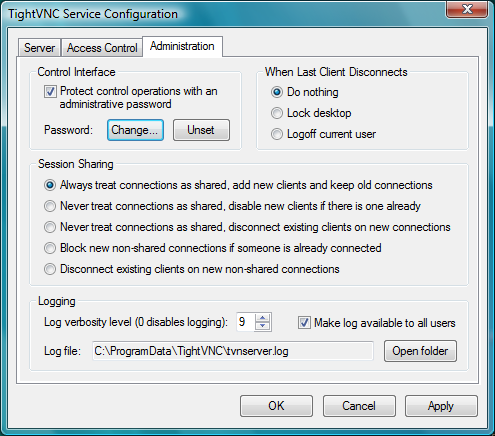

Parameters specified in /etc/vnc/*/vncserver-x11 are applied to VNC Server in User Mode too.

The Options dialog updates a particular VNC configuration file see Using the Options dialog below. Where do I find parameters for VNC server? The syntax to connect to a VNC server session from VNC viewer client is as shown below. Connect to the VNC server Connect to the VNC server session from the VNC viewer of your choice. You can now start the vncserver session again, with new screen resolution that can be defined on the command line. How can I change the screen resolution in VNC server? I thought it might be something to do with systemd, but the same problem occurs when I launch vncserver from the command line. The server and config were working great up until Fedora 16 and 17. I’ve been using a VNC server for quite a few years and have run into a problem with setting screen geometry. Why is VNC server not using geometry setting in command line? If you want to quit the TightVNC server, right-click the TightVNC tray icon and choose “Shutdown TightVNC Server”. To scale it to a custom size, choose Custom scaling, and specify a width and height for the VNC Viewer window. To scale the desktop to the size of the VNC Viewer window, choose Scale to window size.

#Tightvnc server configuration how to
This post outline how to change the VNC session resolution. How do I change the resolution on TightVNC?
#Tightvnc server configuration password
You will be prompted for your password (the one you specified with vncpasswd) after which your Linux desktop should come up. Load up your FavouriteVNC client (I use TightVNC or RealVNC) and type your IP followed by the port number you loaded in VNC server with (NOT the general VNC port). Let’s move on to the testing part of our setup. Notice we are not bothered with any X Server configuration since it’s not necessary to give us a fully functioning remote desktop. VNC Server should be running GNOME as needed now. Remember that the port you are using to start VNC (:5), you will need it later when connecting with a VNC client. Ok now save and restart the VNC instance: We should have VNC load GNOME instead of the default twm. Now edit the local config file in the root folder: First, kill the dekstop you launched earlier with: This will generate a local Notice that :5 is the same port we gave in the first config file.īefore you log in through a VNC client, there is one more file that needs to be adjusted to match our configuration. Now we need to assign a password to the VNC server. The other parameters can be left as the same. Likewise, change the resolution if you prefer. For example, change “5:root” to a different display port and/or username if you do not wish to use root. VNCSERVERARGS=”-geometry 800×600 -nolisten tcp -nohttpd -localhostĬhange the criteria to match your desired configuration. VNCSERVERS=”5:root” # display port and username VNC Server should be installed along with X Window System, then we can move on to the configuration as stated below :Įdit the /etc/sysconfig/vncservers file and add (or uncomment) the following two lines:


 0 kommentar(er)
0 kommentar(er)
